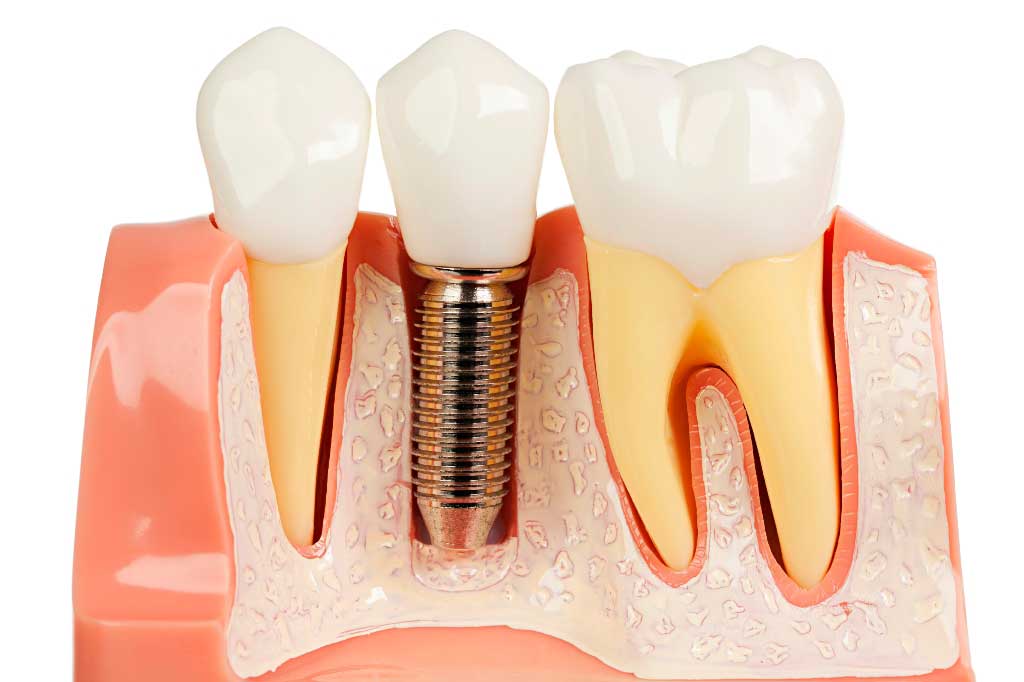
Are you thinking about getting a dental implant? Before you take the plunge, here are some things you should know about dental implants, the dental implant procedure, and some dental implant costs.
“What Are Dental Implants?”
Dental implant surgery is a procedure in which the roots of your teeth are replaced with screw like fixtures made of titanium metal. The artificial tooth, or crown, usually made of porcelain, are then screwed onto the titanium fixtures. This procedure could be for a single tooth or multiple teeth, depending on the requirements of the patient. Dental implants are the next best alternative to having your own teeth.
One of the main benefits of denture implants is that they look just like natural teeth. On top of this, as they are designed to be long-lasting, they function better and are certainly more stable than conventional dentures. Dental implants are designed to fuse with your jawbone. The main benefit of this is that it stimulates the jawbone, making it stronger and healthier. This can also actually prevent your face from sagging which is often the case when you have had multiple teeth removed and the jawbone is weakened.
Some of the other benefits of dental implants that it does not affect your speech, so you are able to talk normally. The best thing of all is that you can go back to eating your favourite foods! You no longer have to pick and choose the types of food you eat due to the fact you have teeth missing, or that you are wearing dentures. You are able to chew your food better without any discomfort. What’s more, you cannot get cavities with denture implants. Of course, you still need to brush, floss and maintain your teeth and gums, and visit the dentist as scheduled, but you can go to town on chocolate and sweets if you so choose!
Dental Implant Procedure
Dental implant surgery may involve several different procedures, depending on the condition of the jawbone and the type of implants being installed. Typically you need to wait until your jawbone has reached its full growth potential. Therefore this procedure is not recommended for children.
Just like any type of surgery, dental implant surgery does present some health risks. These health risks are rare however, it is possible that they can occur. If they do occur, they are usually minor and the treatment is normally pretty straightforward. Some of these risks include damage to surrounding bone structure, nerve damage, infection, and possibly even sinus problems, particularly when implants are placed in the upper jaw.
The procedure itself is performed in several stages and can actually take several months to complete depending on the amount of work required. Like any surgery, there is preparation involved. This includes a comprehensive dental examination in which x-rays are taken, and then models are made of your teeth, jaw, and mouth.
To control the pain of the procedure there are various forms of anesthetics used. It is important to determine the best option for you, and what the repercussions of the chosen method are. You can discuss this with your dentist or dental surgeon prior to the procedure.
Dental implant surgery is typically outpatient surgery and as mentioned earlier, is performed in several stages:
- Firstly, if a damaged tooth is being replaced, this needs to be removed.
- From there, your jawbone is prepared for the procedure. This may actually involve bone grafting depending on the condition of the jawbone and how fit it is for the surgery.
- Once your jawbone is ready, the surgeon then screws the titanium fixtures into your jawbone.
- Then it is a waiting game as you wait for your jawbone to heal from the surgery. This process can take several months depending on the condition of your jaw, and how many titanium screws are inserted.
- Once the healing process is complete, the dental surgeon will then place an abutment onto the titanium fixtures. An abutment is basically just an extension of the titanium fixture.
- Finally, once all the soft tissue, has healed your dentist will then make a mould of your teeth and jaw bone, and then attach the tooth onto the abutment. Then voila! The process is complete and you have a million dollar smile once again.
- After the procedure, you will experience some side effects. This includes swelling of the gums and face, bruising of your gums and skin, minor bleeding, and pain in the immediate area where the implant has been installed. You will normally be prescribed medication to assist with pain management.
Dental Implant Cost
Of course, dental implants are more expensive than conventional dentures, such as having a root canal done (which is the process of saving a tooth). At the time of publication, the cost for one single dental implant can range from $4,500, up to $7,000, depending on the complexity of the procedure. This is usually not covered by health insurance as it is considered a cosmetic procedure. Therefore, cost is obviously an important consideration. If you do decide to have dental implants, it is important to make sure that your dentist, or dental surgeon, is properly accredited to perform the procedure.











